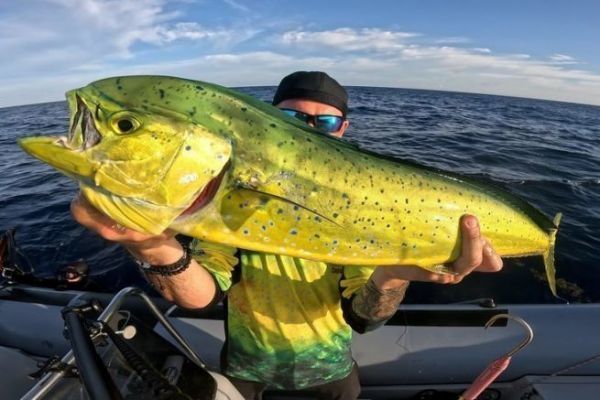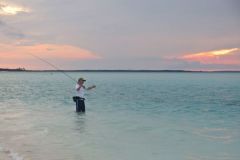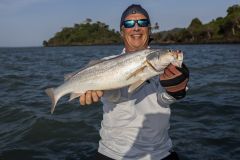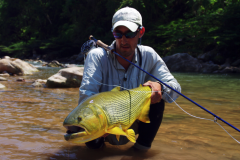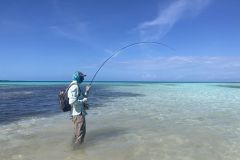The dolphinfish and its habitat
The dolphinfish, a magnificent fish of warm tropical and Mediterranean waters, also known as mahi-mahi in the Pacific, is a pelagic fish prized for its beauty, power, acrobatic jumps and gustatory qualities. It is a brightly-colored surface fish with a long, fusiform body. It can swim fast and is a formidable predator.
Sargassum, floating brown seaweed, is an important habitat for dolphinfish. These algae, which are naturally present in the West Indies, are becoming increasingly abundant as a result of pollution. The shoals are sometimes more than 100 m long and dozens of metres wide, with thicknesses of over a metre. Very harmful when they run aground on beaches, they provide shelter for juveniles and attract the small fish on which they feed.
In fact, the food chain is highly developed under these shoals, from fish fry to barracudas and the whole food chain. At the heart of the food chain, the sea bream occupies the position of queen and revels in this title.
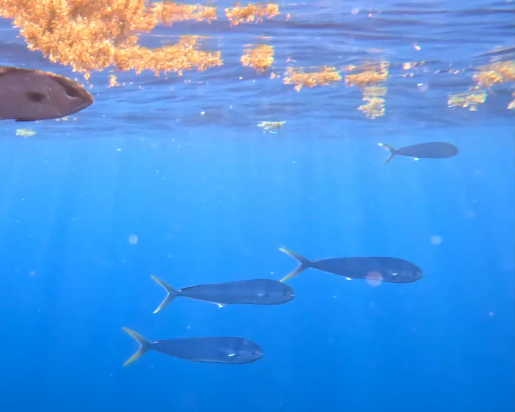
Locating Sargasso beds
The easiest way is to take up a lookout position on the boat and try to spot the brown shoals in the middle of the blue expanse. Not always easy, but playable. The best thing to do is to follow the weather forecast from météo France. This allows you to predict the arrival of large shoals of this algae. Last but not least, my little trick is to have a drone that can be flown over the boat, making it easy to spot the brown shoals.
Watch for circling birds, the ultimate indicator of dolphinfish presence.
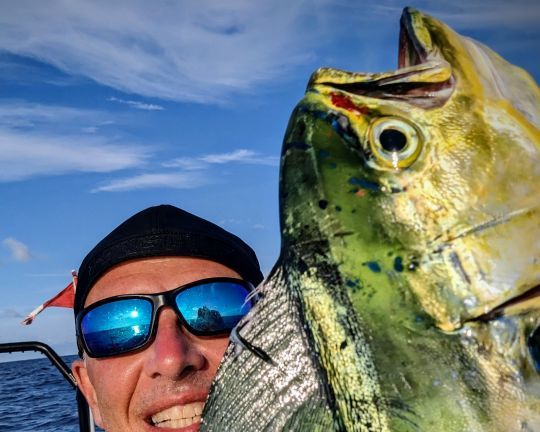
Fishing techniques for dolphinfish
Fishing for dolphinfish is not, in itself, a complicated technique. First approach, cast a casting jig (such as Caperlan's Biastos) or a soft lure armed with a powerful hook (such as Delalande's Swat Shad or Shad GT) along the patch of seaweed. If they're present, you'll see these magnificent fish jump out quickly to attack your lure. Don't hesitate to use the Popper or a noisy surface lure like Caperlan's Exofly. A surface attack is absolutely magical.
Sometimes they attack without taking the lures, so the only solution is a piece of oily fish or squid on a single 4/0 hook weighted with a 5 to 10 g sinker. They won't resist.
Once you've hooked a fish, try holding it a few metres away from the boat, you'll see that other fish will stay close to it, and you'll be able to catch a lot more fish.
Be careful, the fight is powerful and jumps out of the water are frequent, so keep your tension up, as the mouth is fragile and the fish can quickly become unhooked.
Last but not least, you can drag a good hard lure 40 m from your boat at a speed of around 5 knots. Curious fish won't hesitate to infiltrate the bubbles of the motor to take your lure.
Fishing for dolphinfish under the Sargasso is a unique and exhilarating experience. It's an opportunity to catch a magnificent, combative fish while discovering a fascinating ecosystem. Don't hesitate to take a mask and snorkel to observe the life under these shoals.
